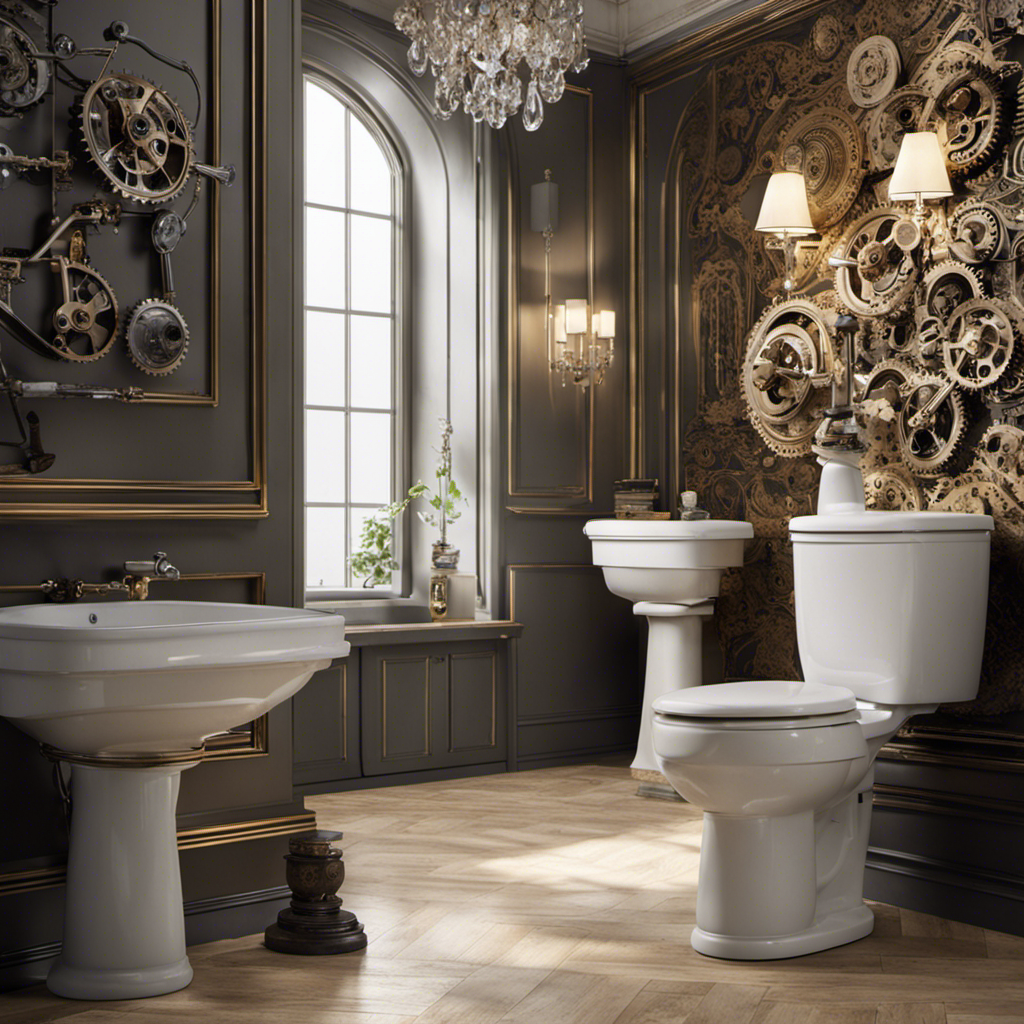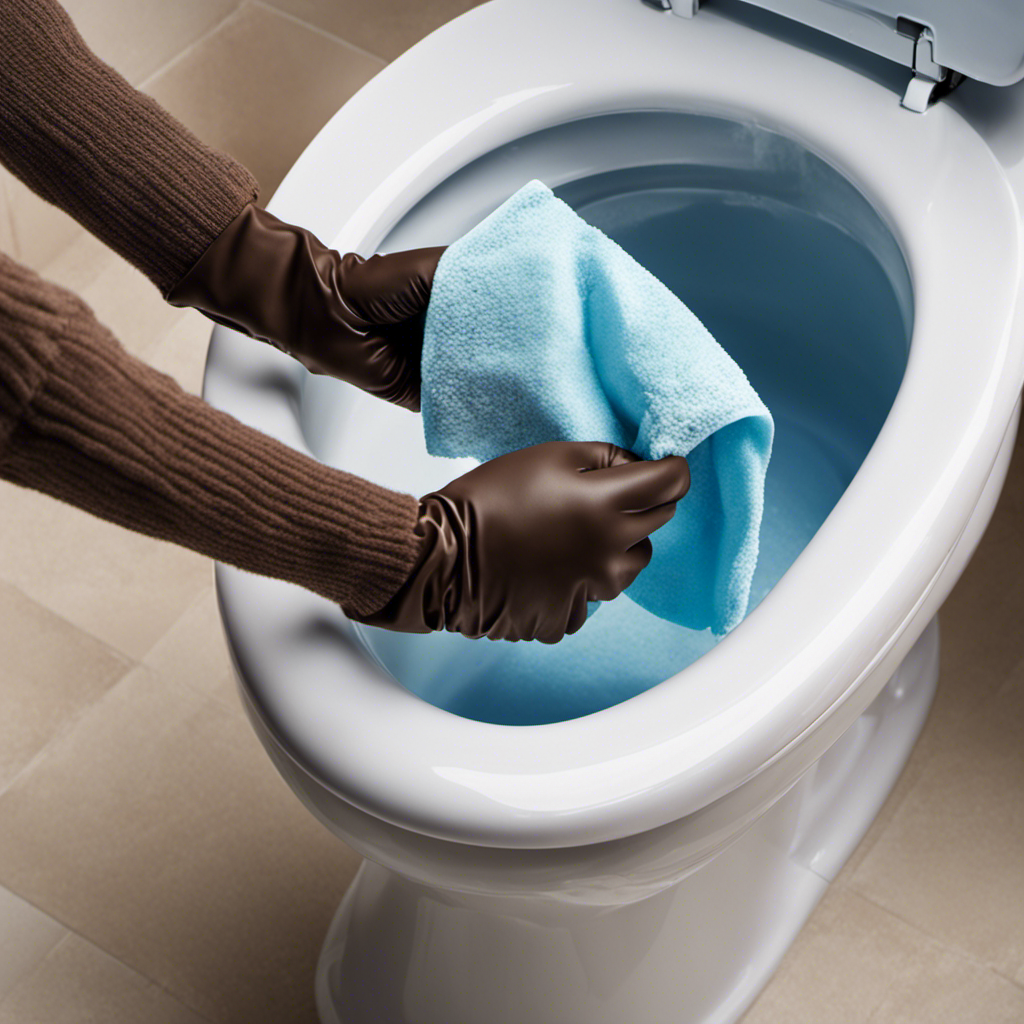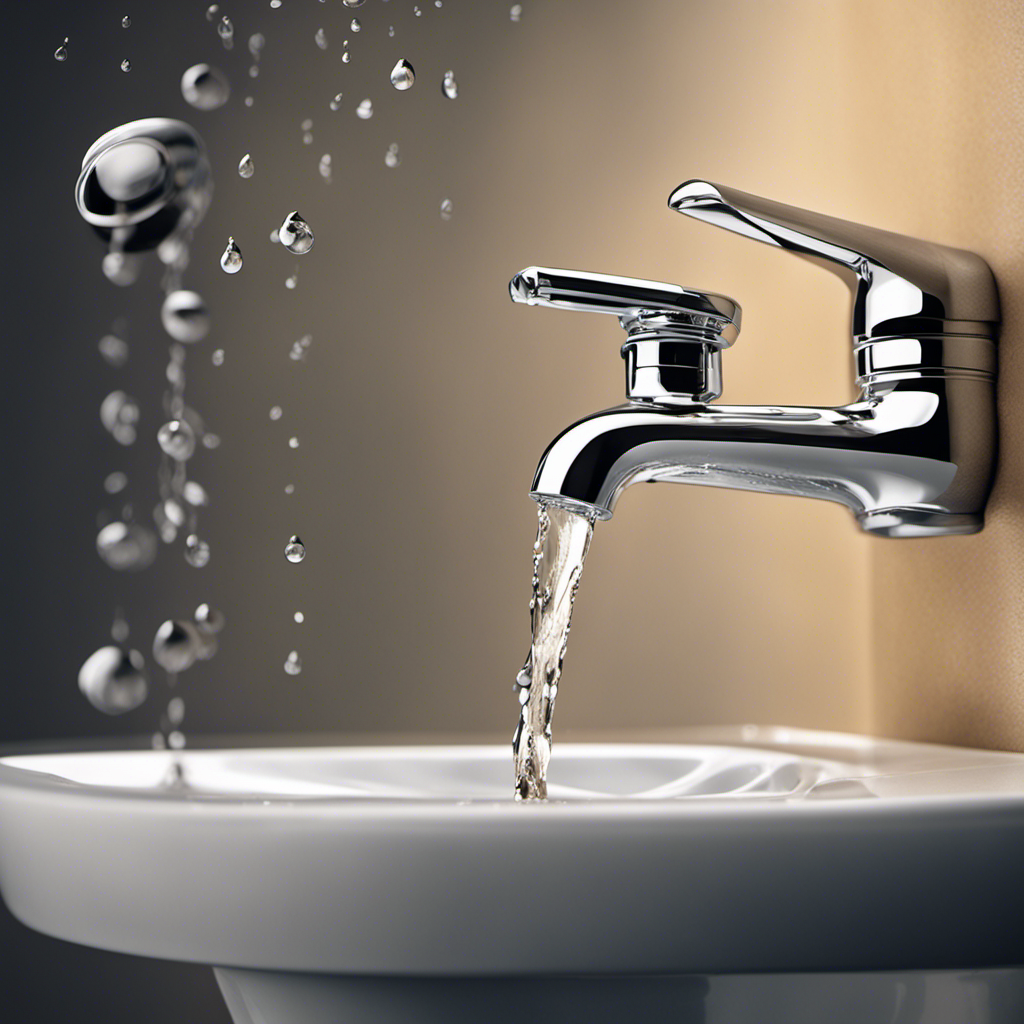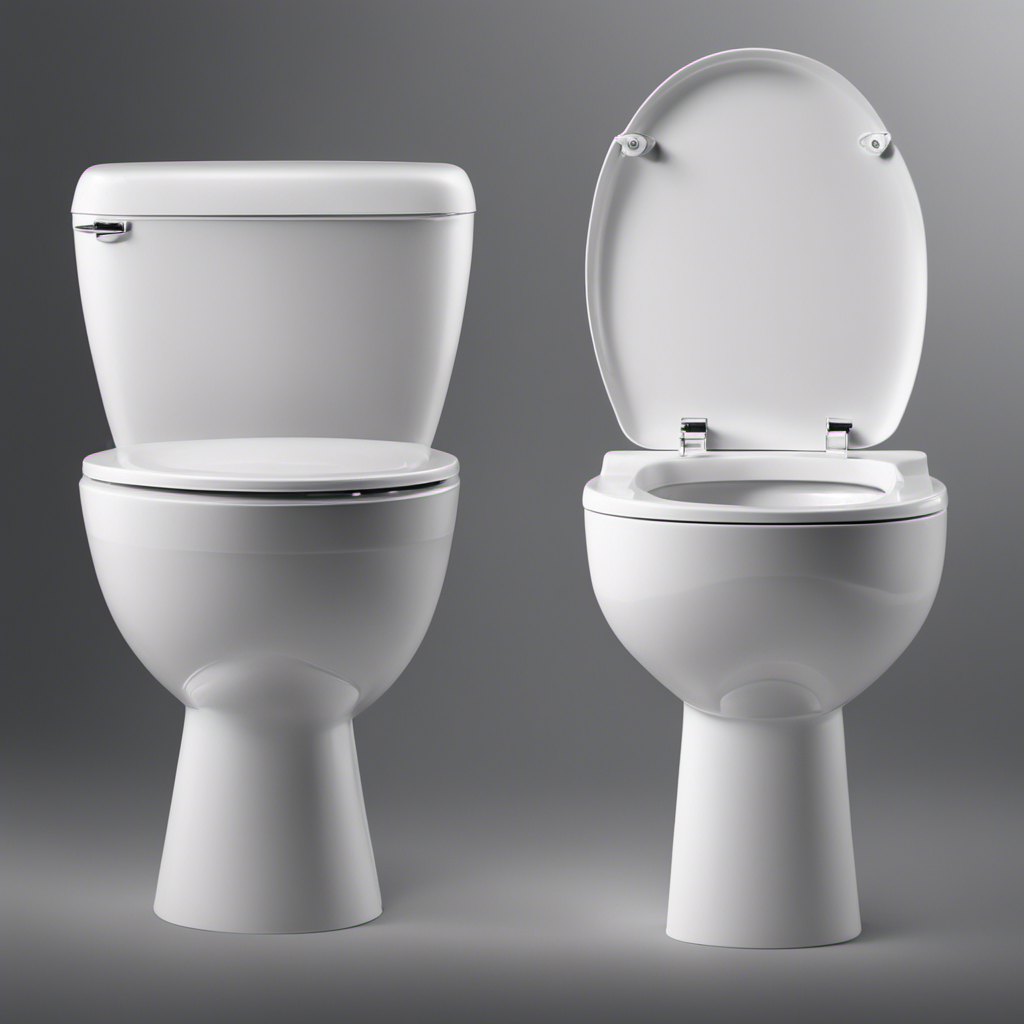Have you ever been bothered by a noisy toilet when flushing? Well, I certainly have! It’s frustrating when you can’t even use the bathroom in peace.
In this article, I’ll guide you through the possible causes of a noisy toilet flushing and provide you with practical solutions to fix it. From identifying and fixing a whistling toilet to troubleshooting a loud flushing, I’ve got you covered.
Let’s dive in and make your toilet a little quieter!
Key Takeaways
- Loose flush valve, high water pressure, low water pressure, faulty flushing mechanism, and worn-out flapper valves are common causes of noisy toilet flushing.
- To identify and fix a whistling toilet, listen for a high-pitched sound after flushing, check the fill valve for malfunction, adjust the fill valve‘s float level, and replace the fill valve if necessary. If the problem persists, replacing the flapper valve may be necessary.
- Troubleshooting a loud flushing toilet involves replacing the flush valve, tightening the toilet handle, checking for water pressure issues, inspecting the fill valve, and insulating the pipes.
- Common solutions for a clanking toilet include replacing a faulty flush valve, tightening a loose handle, checking for high water pressure, insulating the pipes, and stabilizing the toilet tank.
Possible Causes of Noisy Toilet Flushing
One of the possible causes of a noisy toilet flushing is a loose flush valve. When the flush valve is not securely fastened, it can vibrate and produce loud noises during the flushing process.
However, water pressure can also play a significant role in the noise levels of a toilet flush. High water pressure can cause a sudden surge of water through the pipes, resulting in a loud and abrupt flush. On the other hand, low water pressure can lead to weak and prolonged flushing, which may produce a different type of noise.
Another potential factor affecting toilet noise levels is a faulty flushing mechanism. Issues such as worn-out flapper valves, damaged fill valves, or clogged pipes can contribute to noisy flushes. Troubleshooting and resolving these issues can help eliminate the noise and restore a quieter flushing experience.
How to Identify and Fix a Whistling Toilet
First, you should listen for a high-pitched sound coming from your toilet after you flush it. This whistling noise is a common toilet problem that can be easily fixed with some DIY toilet repairs.
The whistling sound is caused by a malfunctioning fill valve or a worn-out flapper valve. To identify the problem, remove the tank lid and flush the toilet. If you hear the whistling sound, it is likely coming from the fill valve. To fix it, you can adjust the fill valve‘s float level or replace the fill valve altogether.
If the whistling sound persists, it may be caused by a faulty flapper valve. In this case, you can replace the flapper valve with a new one to solve the issue. Remember to turn off the water supply and follow the manufacturer’s instructions for a successful DIY toilet repair.
Troubleshooting a Loud Flushing Toilet
If your toilet is making a loud noise when you flush it, it could be due to a faulty flush valve or a loose toilet handle. Identifying the signs of a faulty toilet flush mechanism is crucial in troubleshooting the issue. Here are some possible solutions and signs to look out for:
-
Replace the flush valve: A worn-out or damaged flush valve can cause loud noises during flushing. Replace it with a new one to resolve the problem.
-
Tighten the toilet handle: A loose toilet handle can create vibrations and noise. Make sure to tighten it securely.
-
Check for water pressure issues: High water pressure can lead to loud flushing noises. Installing a pressure reducing valve can help regulate the water flow.
-
Inspect the fill valve: A faulty fill valve can cause loud hissing or gurgling sounds. Consider replacing it if necessary.
-
Insulate the pipes: Noisy vibrations can occur due to loose or improperly installed pipes. Insulating them can help absorb the noise.
Common Solutions for a Clanking Toilet
Replacing a faulty flush valve or tightening a loose handle are common solutions to address a clanking toilet. When a toilet tank is not properly secured, it can cause vibrations during flushing, resulting in a loud clanging noise. By tightening the handle, you can stabilize the tank and reduce the clanking sound.
Another potential cause of a clanking toilet is high water pressure. Excessive water pressure can cause the pipes to vibrate and create noise when the toilet is flushed. Installing a pressure-reducing valve can help regulate the water pressure and eliminate the clanking noise.
By addressing these common issues, you can restore peace and quiet to your bathroom.
Now, let’s move on to the next section where we will discuss tips for achieving a quieter toilet flush.
Silent Flushing: Tips for a Quieter Toilet
Installing a pressure-reducing valve can help regulate water pressure and achieve a quieter flush. This valve works by reducing the high water pressure in the pipes, preventing the loud noise that often accompanies flushing.
In addition to this solution, there are other soundproofing options available to further minimize noise in the bathroom:
- Installing acoustic foam panels on the walls and ceiling to absorb sound waves.
- Using a soft-close toilet seat to eliminate the loud banging noise.
- Insulating the pipes with foam or rubber to muffle the sound.
- Adding a soundproofing mat under the toilet to reduce vibrations.
- Ensuring that the toilet tank is tightly sealed to prevent any unnecessary noise.
Frequently Asked Questions
What Are the Common Solutions for a Clanking Toilet?
When fixing toilet noise and reducing vibrations, there are a few common solutions. First, check the water supply valve, fill valve, and flush valve. These components may need adjustment or replacement to resolve the clanking issue.
How Can I Troubleshoot a Loud Flushing Toilet?
When troubleshooting a loud flushing toilet, I analyze the water supply, check for loose parts, and inspect the fill valve. Fixing these issues can silence the toilet, like a whisper in a library.
What Are the Possible Causes of a Noisy Toilet Flushing?
Excessive water pressure and loose or worn out parts can cause a noisy toilet when flushing. It’s important to check the water pressure and inspect all the parts to identify and fix the problem.
How Can I Identify and Fix a Whistling Toilet?
To identify and fix a whistling toilet, check for possible causes such as a faulty fill valve or flapper. Troubleshooting tips include adjusting water pressure and ensuring proper alignment of parts.
What Are Some Tips for a Quieter, Silent Flushing Toilet?
When it comes to a quieter toilet, soundproofing options and silent flush mechanisms are key. I’ve found that adding insulation to the walls and choosing a toilet with a low-noise flush can make a significant difference.
Conclusion
In conclusion, fixing a noisy toilet flushing doesn’t have to be a daunting task. By identifying the cause of the noise and following the appropriate troubleshooting steps, you can restore peace and quiet to your bathroom.
Remember, a silent flushing toilet is like music to your ears, bringing harmony and tranquility to your daily routine. So don’t let a clanking or whistling toilet be a thorn in your side; take action and enjoy the sweet symphony of a well-functioning bathroom.










